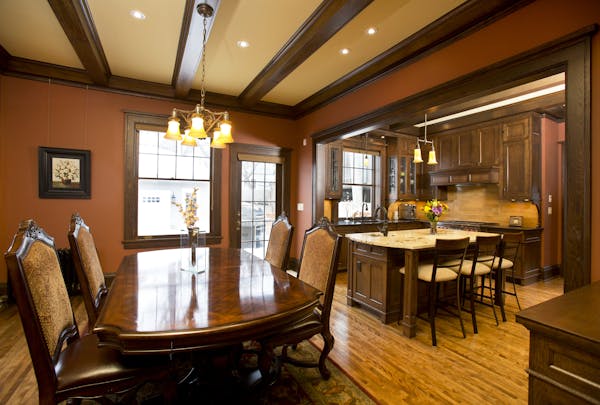Bethany Gladhill knew it was time to do something about her old, drafty windows.
"They were starting to get leaky and rattle-y," she said of the 1886 Victorian in St. Paul that she bought more than 20 years ago.
But she wasn't sure what to do — or how to do it. She was reluctant to replace the windows with new ones. "It would affect the look and feel of the home," she said. "I love old houses."
So last summer, she and her husband took a class on old window repair.
"They made it very accessible," she said. Before the class, her husband, who "married into an old house," was intimidated about tackling the windows. But after taking the class, the couple successfully tightened up some of their windows and replaced panes of glass. "I can tell a difference. It's not as drafty," Gladhill said. And they feel confident to take on even more challenging projects. "We haven't replaced the sash cords yet. That will be this summer."
The mystery of basic maintenance and repair chores can seem overwhelming to owners of old houses. And the presumed cost and hassle can deter prospective buyers from even making an offer. To fill the knowledge gap, the Preservation Alliance of Minnesota (PAM) last year launched an ambitious education initiative, including the class attended by Gladhill, which sold out.
"Old wooden windows are built to be repaired, and people who can do it can save so much money," said Beth Rutledge, PAM's education coordinator. The class on repairing old windows was so popular that PAM plans to offer it again, in multiple locations, as well as a class on winterizing windows and "Old Windows 2," a class where homeowners will be invited to bring in their old windows and get hands-on help from an expert.
Help for would-be handy-folk
Next month, PAM will offer a new class, "Handyman Special," designed to help homeowners learn basic handyman skills such as how to unclog a drain, repair a running toilet and install a light fixture.
The classes are targeted to owners of old houses, but anyone can attend. "The reality is the majority of houses in Minneapolis and St. Paul are more than 50 years old," Rutledge said. "But even if you live in a condo, you might not want to have to wait for a plumber."
Homeowners aren't the only target of PAM's education initiative. Last summer, it launched an "Old Home Certified" program and designation for real estate agents.
The new designation helps fill a vacuum, according to Rutledge, herself a real estate agent.
"Because I am an agent, I have to take continuing education classes," she said. "There were classes about forms and legal issues and changes in disclosure. But there wasn't much offered on the houses themselves."
The Old Home certification program teaches agents about the architecture of Minnesota, why old is green, how to market and stage old houses, and how to find good contractors for working on old houses, Rutledge said. "We're also trying to develop an old-house vocabulary: What's the difference between a balustrade and a banister? What's a portico and a porte-cochere?"
Being Old Home Certified can be a boon for agents, according to Rutledge.
"If you're looking at houses with charm and character, why not work with somebody who knows the difference between a bungalow and a rambler?" Rutledge said. "People who care about craftsmanship and quality want to work with somebody who understands them," answer questions and direct them to old-home resources.
Steve Hong of Re/MAX Results is one of the 60-plus agents who've gotten Old Home Certified since the initiative was launched. "I've always had a love of these old homes," said Hong, who has owned three vintage houses and maintains a website, www.housesofminneapolis.com, with information about city history and architectural styles.
He's done extensive updating of his current old house, a 1930s Tudor-style in Minneapolis, which was featured on the Minneapolis St. Paul Home Tour a few years ago. "I wanted to show people what you can do."
The biggest misconception about old houses is that they require overwhelming upkeep, Hong said. "Old houses breathe better," avoiding the mold problems that have plagued owners of more recently built stucco homes. And old homes are better built in general, he added. When a major storm hit the Twin Cities in 1998, many newer south suburban homes had extensive damage, he noted, while older houses near Lake Nokomis were able to withstand the severe weather. "The only damage to most of the old houses was when a tree actually fell on them," he said. "The houses themselves were intact. They were built to last."
PAM also is targeting the community at large, with tours of historically significant sites. Last year, it offered a tour of the Pillsbury A Mill. This year, it's planning a tour of Irvine Park, the historic neighborhood in St. Paul. The tours are designed to educate, motivate and inspire the public to protect and preserve its historic resources — "to help people understand what they have," Rutledge said. "If you like to eat or drink in an old building with exposed brick walls, if you have an appreciation for the unique, if history is part of your life — you are a preservationist."
Kim Palmer • 612-673-4784

Minnesota Sports Hall of Fame: A class-by-class list of all members

This retired journalist changed professional wrestling from Mankato

